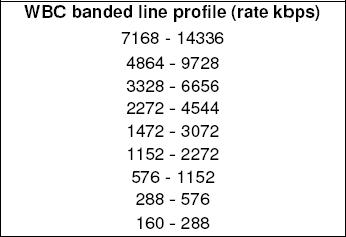Dynamic Line Management (DLM) on ADSL2+
- Subscribe to RSS Feed
- Mark as New
- Mark as Read
- Bookmark
- Subscribe
- Printer Friendly Page
- Report to Moderator
- Plusnet Community
- :
- Library
- :
- Dynamic Line Management (DLM) on ADSL2+
Dynamic Line Management (DLM) on ADSL2+
Here at Plusnet, we started running our trials on ADSL2+ about 12 months ago now. We now have almost 1,000 customer running on the Wholesale Broadband Managed Connect (WBMC) service, which is one of the BT Wholesale versions of ADSL2+ (Wholesale Managed Connect is the other main one). Since we started the trial, we've had a lot of questions about how Dynamic Line Management works - and how it differs from the DLM on the older IPStream Max and IPStream Max Premium (upto 8Mbps) services that we've been selling for the last few years.
Dynamic Line Management is a feature that is run on all ADSL and ADSL2+ services that are provided by BT Wholesale to other ISPs (such as Plusnet). It analyses line performance information on their network using a system called RAMBo (Rate Adaptive Management Box). It uses this information to determine whether or not a line is unstable, and if it is, it will make some configuration changes to try to stabilise the line without any manual intervention being required.
The DLM processes that run on Wholesale Broadband Connect and Wholesale Broadband Managed Connect are generally very similar to those which we have seen (and written about) on IPStream Max / Max Premium. There have however, been a number of changes made, designed to improve both the speed and efficiency of how it reacts to lines which are experiencing dropping connections and poor speeds. An example of this is the initial training period when a telephone line first has broadband applied to it. Generally, the DLM on WBC will find the optimal performance for a line in half the time that it would have done on IPStream Max (which was generally in the region of 5 days). It is also designed to adapt much faster, should a line's performance improve (such as if the synchronisation speed improved after a voice line fault were fixed).
Generally the performance of each line on WBC/WMBC is reviewed on a daily basis, unless they are what BT refer to as "flapping lines" or ones which drop the connection regularly. These are generally reviewed more frequently. Once a line has been stabilised, the frequency of the DLM changes become less and less often. It is only when a line experiences a period of instability where this process is restarted. The reconfiguration of these lines will involve changes in the "line profile" (which involves SNR, bRAS profile and interleaving depth). Once RAMBo has requested a change to the line profile to be made, there is generally a delay of roughly two hours before the change is actually made. When this change occurs, there is generally a brief drop in connection of approximately 30 seconds.
Because the DLM is designed to adapt to a drop in performance, it also needs to be able to respond to an improvement in performance. Say you had to raise a fault on the voice side of your telephone line - that will generally also result in a deterioration or loss in broadband service. This normally will also result in a change in line profile. DLM is always designed to provide the optimal line conditions, giving a stable service at the best possible speed. Where there is a deterioration in service, the speed at which the DLM will react will depend upon the severity of the problem. A connection which drops once a day will see profile changes occur less quickly than if a line was disconnecting far more frequently.
Another addition to DLM on WBC/WBMC is that of banded profiles. Initially, all lines are configured to run in a fully rate adaptive mode. That means that there isn't really any maximum or minimum capability of the broadband service (within technical capabilities). For lines which drop frequently, a banded profile can be applied, which will restrict a line's connection speed from connecting at a level which it can't maintain. Banded profiles operate with a minimum and maximum connection speed band; for example, one banded profile will control the connection speed from between 3.3-6.6Mbps.
The below image will show you all of the various different banded profiles that are currently on WBC/WBMC.
That's pretty much it as far as Dynamic Line Management is concerned. If you have any questions at all, please feel free to drop into our Community Forums and we'll do everything that we can to help.
